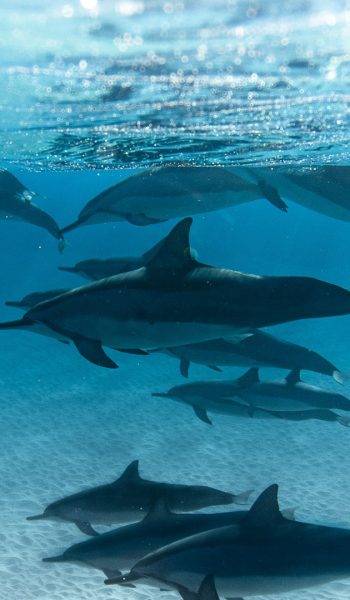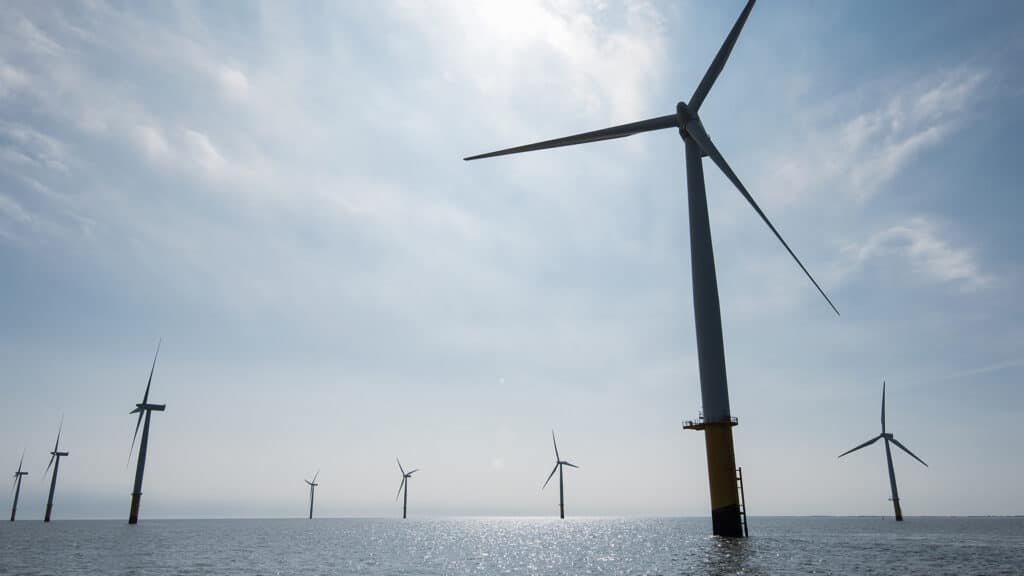Although sea shipping is the most common way to transport goods worldwide, the maritime industry is considered as one of the main greenhouse gas (GHG) emitters. Therefore, the sector is undergoing a major transformation to reduce its carbon impact. Wind energy will help marine shipping achieve the ambitious goal set to reduce GHG emissions.
How does wind energy from offshore farms benefit the maritime industry?
- In order to reach ambitious goals in the fight against climate change, the maritime industry is driving a multi-pronged strategy: energy savings by reducing speed, optimizing route, lowering friction for hulls;
- electrified ship designing;
- using carbon-cutting technologies, including low or carbon-free energy sources such as wind energy.
Your environmental monitoring at your fingertips!
Optimize your environmental monitoring, become smarter and more sustainable with a unified system that gathers all your environmental sensors & data in one place.

What is wind energy?
Wind energy is the power obtained from converting the kinetic energy produced by the air in motion into mechanical power. Wind turbines and windmills capture this energy and transform it into electricity using the aerodynamic force from their rotor blades.
As a clean, free, limitless, and readily available resource, wind generates sustainable electricity. This is the reason investments in the development of this renewable energy source are growing. In the maritime industry, this alternative power source is urged to play a key role in decarbonizing the sector. Some companies are already looking toward ships that are 100% powered by the wind but there is still a long way to go before fleets are only composed of such vessels.
Meanwhile, wind energy can be used as an efficient supplement to other energy sources in order to reduce fuel consumption and carbon dioxide emissions. According to the UK government’s Clean Maritime Plan published in 2019, wind-assisted power systems for ship’s propulsion could be worth $3.5 billion by 2050. Some of these systems will be meant for new designs whereas some might adapt to existing vessels.
How can offshore wind farms benefit to maritime industry?
Offshore wind farms are built at sea where they have less impact on people and on the scenery of nature. Faster wind speed offshore compared to land allows a more significant rise in electricity production per amount of capacity installed. Furthermore, this source of energy is more reliable offshore, thanks to a steadier wind speed. Lastly, OWF does not emit greenhouse gases nor consume billion gallons of water.
Deployed since 1991, offshore wind farms (OWF) are made up of several wind turbines installed in one location. This power plant has higher capacity and enables the pooling of resources, leading to economies of scale in planning, construction, and maintenance. The principle is that the turbines work as generators to produce electric power from wind energy. This electricity is then transferred through a cable under the seafloor to an offshore substation where its voltage is stabilized. The final step consists of exporting the electric power to an onshore substation where it is added to the main electricity grid.
But for electrified ships, offshore wind farms could become very practical refueling stations, solving two great issues:
- the size of batteries required to replace conventional generating sets using fossil fuel;
- the distances to sail without any possibility of recharging for long journeys.
OWF represents a clean recharging option at sea. Alike onshore power-to-ship facilities installed in the biggest European ports, offshore mooring, and recharging buoys could allow ships to access power without having to berth at ports. This method could lessen GHG emissions so as to improve port air quality.
What environmental study is required to install an offshore wind farm?

To install an offshore wind farm, lots of things must be done to monitor and protect the surrounding environment. We speak about different phases: The actual and initial phases, the construction phase, and the post-construction phase.
During the actual and initial phases, different actions must be done: marine mammals detection, underwater cable feasibility study, monitoring of underwater noise, drafting of technical reports, reflection on the measures to be taken following the impact studies, mapping and modeling for the prediction of acoustics impact, and more reports.
The construction phase is about monitoring underwater acoustics in real-time by the installation of buoys, the real-time monitoring of all the sound emitted, and the study of sound propagation.
Finally, the post-construction phase is about monitoring marine mammals and acoustics, controlling if some changes are detected, and comparing them with previous reports.
Here, we speak only about the environmental studies that must be done before, during, and after all projects of construction. These types of monitoring can last for several years.
What are the major disadvantages of offshore wind farms?
However, the wind applications in the maritime industry are at various stages of development, some being already implemented whereas some are still at the concept stage. These discrepancies might be linked to the same facts that prevent the technology from wide spreading. Wind energy indeed presents some major disadvantages and challenges:
- extremely high construction and maintenance costs of turbines and wind facilities.
- difficulty to build robust wind farms in waters with a depth of around 200 feet (approx. 60 m)
- complexity and safety hazards during maintenance operations of wind turbines and power cables;
- risks of collisions between vessels and wind turbines, especially in areas with high traffic density and intense shipping activity and/or small sea spaces. Maritime accidents may have severe hardships: serious environmental damage, heavy human casualties, huge financial losses for all parties involved,
- risk of damage to wind turbines during heavy storms or hurricanes;
- diversion of vessels to avoid wind farms, which some countries consider as maritime exclusion zones. Taking a longer route may lead to additional costs and constraints for the shipping line (increased fuel spent, meaning more GHG emissions, longer transit times, higher wages for the vessel crew, compliance with both local national and international regulations);
- visual nuisance created by the giant turbines may create unpopularity among coastal residents, hurt local tourism and real-estate values
- risks for flying animals to be killed by rotors, and also for marine ecosystems and sea life, particularly marine animals because of underwater noise during the wind park construction and operation. These effects are not fully understood yet, but experts are conducting research on this topic;
Sinay is working with a module set to predict and prevent underwater acoustics. When human activities produce noise, it might overwhelm the sound used by many marine species to move, communicate, find food, etc., hence disturbing or harming them. This innovative AI-based tool is used to monitor underwater noise in real-time in order to make the best decision to reduce them. It can also help to detect the presence of marine mammals in a specific area and make sure that the project or operation planned is no threat to their safety.
Your environmental monitoring at your fingertips!
Optimize your environmental monitoring, become smarter and more sustainable with a unified system that gathers all your environmental sensors & data in one place.

What are the major wind farms in the world?
In the world, it’s more than 20 countries that have at least one offshore wind turbine installed off their coast. Europe holds 75% of the offshore wind turbines.
The United Kingdom is the European country with the most offshore wind capacity. And it continues to grow with the construction of new farms. Last December 2021, the biggest offshore wind farm was fully installed off the United Kingdom coasts, with 165 wind turbines for a capacity of 1.32GW. Behind it, we find Scotland and the Netherlands.
China continues its breakthrough in the world of wind energy as well as the United States where the subject is increasingly present. Calls for tenders are being made for the construction of new wind farms to produce more and more energy to meet the consumption of their citizens and the world.
All of these offshore wind farms and projects of construction are in line with the ambition of reducing CO2 emissions, achieving carbon neutrality, and protecting the environment.
Conclusion
Wind power is still a young technology, but it is likely to become key for the maritime industry. Various studies show a 50 percent fall in the price per megawatt-hour of wind energy across Europe these past years. This drop is the result of multiple parameters: technological maturity, larger turbines, increased competition, and economies of scale.
With time and experience that enable more efficient collaboration between all stakeholders, the prices for wind power should lower further in coming years, as capacity is growing and renewables are expanding in Europe (mainly Denmark, Belgium, Germany, the UK, Netherlands, France, Ireland), but also in the United States, in Asia (China, Taiwan, South Korea, Japan). At this time, 53 countries have wnd farms operating, planned or under construction.
Frequently Asked Questions About: Wind Energy
As offshore wind farms are a big contributor to underwater pollution, they can have a direct impact on marine life. From their construction to their deployment and use, OWFs create noise and vibrations below the sea surface that disturb marine life and flora, especially those mammals that rely on sound (like echolocation or vocalization) to survive in the ocean.
Wind energy is harvested through wind turbines that don’t release any harmful pollutants into the air or water, as opposed to energy derived from fossil-based fuels, and in turn results in lower total air pollution and carbon dioxide emissions.
Human activities such as shipping, sonars, construction activities such as dredging, platforms, drilling, and installing oil rig platforms, as well as seismic surveys contribute to underwater noise pollution
Underwater noise pollution can be prevented with innovative technologies and Artificial Intelligence, such as the Sea Life Module on the Sinay IT platform, the Sinay Hub.





